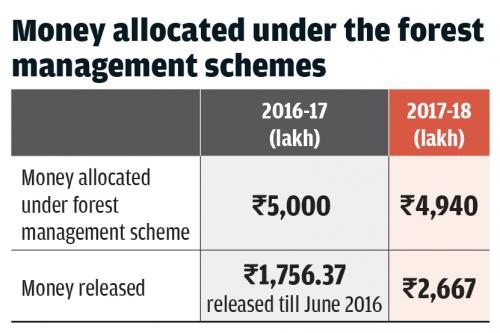Agreement with World Bank
- The Government of India and the World Bank signed a $125 million agreement to support India in developing an innovative biopharmaceutical and medical devices industry.
- The Innovate in India for Inclusiveness Project (I3) agreement was executed between the project implementing agency - Biotechnology Industry Research Assistance Council and Ministry of Finance and International Bank for Reconstruction and Development on behalf of World Bank.
- Biotechnology Industry Research Assistance Council (BIRAC) is a not-for-profit Public Sector Enterprise, set up by Department of Biotechnology (DBT).
- The Innovate in India for Inclusiveness Project (I3) will support Government of India’s Biotechnology Industry Research Assistance Program (BIRAC), set up five years ago to support innovative start-ups and collaborations through strategic partnerships.
- BIRAC will now scale-up its efforts across the industry and focus on providing the ingredients that are currently missing in India’s biopharma innovation ecosystem
3D printing of electronics directly on human hand
- Scientists have successfully 3D printed electronics on the human hand for the first time.
- It could enable soldiers on the battlefield to quickly make temporary sensors and detect hazardous agents.
- Researchers also successfully printed biological cells on the skin wound of a mouse.
- The technique could lead to new medical treatments for wound healing and direct printing of grafts for skin disorders.
- 3D printing or additive manufacturing is a process of making three dimensional solid objects from a digital file.
Plastic pact signed
- More than 40 British companies including major retailers and soft drinks companies pledged to eliminate unnecessary plastic packaging as part of an anti-pollution push.
- The 42 firms, responsible for 80% of plastic packaging sold in Britain, have signed up to a pact.
- It aims to tackle plastic pollution over the next seven years through a series of measures.
- It also include cutting down on single-use plastic packaging, making all plastic packaging reusable or recyclable.
- Corporate giants such as Coca-Cola, have all signed up the “U.K. Plastics Pact” amid growing concern over the problem of plastic pollution, particularly in the oceans.
Forest fires in India
- India saw a 46 per cent increase in the number of forest fires in the last 16 years (2003-17).
- India witnessed a 125 per cent spike in such fires in just two years (2015 to 2017).
- In 2017, the maximum number of forest fires was reported in Madhya Pradesh followed by Odisha and Chhattisgarh.
- In fact, 23 out of 33 states and union territories reported an increase in forest fires.
- As much as 64.29 per cent of the Recorded Forest Area (RFA) is prone to fires, according to India State of Forest Report (ISFR) 2015 published by the Forest Survey of India.
- Most of the forest fires between 2003 and 2016 have occurred in open forests followed by moderately dense forests.
- India loses around Rs 550 crore every year owing to damages caused by forest fires.

- In August 2017, the National Green Tribunal had asked the Ministry of Environment and Forests (MoEF) to evolve a national policy to prevent and control forest fires.
Thar Desert was once tropical forest
- Indian researchers have discovered a set of rare wood boring trace fossils in the Barmer region in Rajasthan.
- It reveals that this area was a tropical forest and even had a vast river network 55 million years ago.
- The rare almond-shaped ‘trace fossils’ Asthenopodichnium lignorum and J-shaped fossils of Asthenopodichnium lithuanicum have been discovered for the first time in India in the Barmer sandstone formations.
- Fossils are preserved remains, impressions or traces of any past living organisms.
- Trace fossils are non-body remains, which indicate the activity or behaviors of organisms such as tracks, trail, impressions, burrows, and borings for resting, locomotion and respirations.
- Scientists say the wood boring trace fossils of mayfly are rare and intact.
- Mayflies live close to water, where their aquatic larvae develop, whose presence is an indicator of a clean and unpolluted environment.
Gaia mission
- The latest data produced by the Gaia mission was released, which is the second of its kind.
- The Gaia mission’s goal is to chart a three-dimensional map of the home galaxy, revealing in the process its composition, formation and evolution.
- The first data release was published in 2016, containing distances and motions of only two million stars.
- It is a European Space Agency’s mission.
- Gaia will provide unprecedented positional measurements for about one billion stars – about 1 per cent of the Galactic stellar population – in our Galaxy and Local Group.
- Gaia originally stood for Global Astrometric Interferometer for Astrophysics.
- The mission name remained even though it no longer reflects the methods used to perform the science operations.
Source: PIB, The Hindu, Business Standard, Down to Earth
